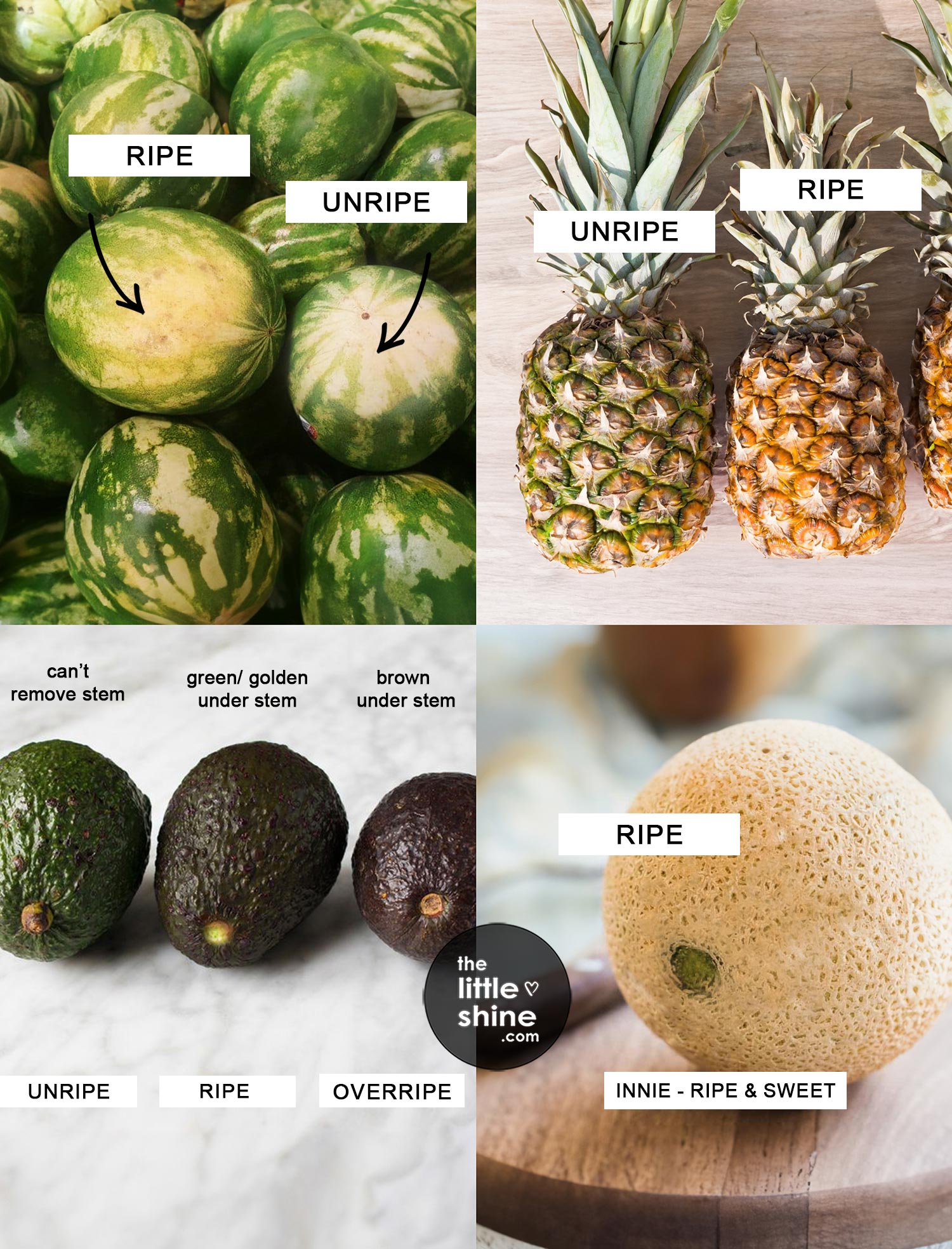Do you often shop for your fruits and come home just to find them underripe or too overripe? Maybe your fruits have got spoilt within just a couple of days of them being bought? Well, this could be because you aren’t shopping for your fruits in the right way!

Buying fruits is not a hard task, but you do need to put in just a little extra effort to get yourself some good quality fruits and here’s how you should buy fruits in the right way!
What do you need to look for in some common fruits before buying them?
1. For Avocados: season – January – March
You need to make sure your avocados are slightly shriveled and has a few dry spots. Also, gently press them and you have to observe whether the avocado is rock hard or not. It should not be rock hard and should be sightly tender. you can also do the stem test – If the stem comes off easily and you see green, it’s good to eat. If the stem is fussy and won’t come off, it’s likely not ripe. And if you pull it off and you see brown, that probably means it’s overripe.
2. For Kiwi fruits: season – August – December
The kiwis should have rough skin, which feels fuzzy and it should be quite firm. But the kiwi should yield to a little pressure.
3. For Nectarines: season – Mid to late summer
Your nectarines shouldn’t be green on any part of the fruit and should not have any wrinkled patches. It should get slightly indented while gently pressed.
4. For Mangoes: season – May – September
When you smell your mango, it should smell fruity and fresh (at the stem of the mango). It should be gently pressed and should slightly yield to pressure and mustn’t be rock hard.
5. For Watermelons: season – May – August
The watermelon should have a consistency stripe pattern, wherein the green stripes should be dark green and the pale stripes should be creamy yellow. It should look dull in color and should not be shiny.
If the watermelon has a large webbed pattern like scratch marks, then it is sweet. Find a watermelon that is uniform in size and heavy in its weight, with a large yellowish-orange filed spot on it. If the field spot is white, or even nonexistent, this probably means that the watermelon was picked too soon, and will not be ripe
6. For Pineapples: season – April – May
Make sure your pineapple has fresh leaves, which are dark green in color. When you smell its stem, it should have a sweet- and strong-smelling fragrance. When you hold it, it should be slightly heavy. Do a pluck test – gently pull the leaves and it should come off easily if the pineapple is ripe.
You can also bake the pineapple to ripen it faster and make it more juicier and sweeter – Start by heating the oven to 225°F. Place the whole pineapple — leaves and all — directly on the rack in the middle of the oven, and cook it for 20 minutes. Baking your pineapple sweetens the flesh makes it juicier, leaving you with deliciously luscious fruit.
7. For Cherries: season – April – July
Cherries should always be still attached to their stems and should have a dark or deep crimson color flesh/color. When you touch it, it should be firm to touch and feel. The stem of the cherry should come off easily if ripe.
8. For Strawberries: season – April – October
The strawberries should have a rich red color and when you smell it, it should have a sweetish aroma.
The leaves should look heathy and must be darkish green in color. Make sure that the portion of the strawberries under the leaves is not yellowish, whitish or green in color.
9. For Bananas: season – All year round
Avoid buying bananas that are green in color (unless you do not wish to eat them immediately). Even green bananas have to be lightish green in color.
For yellow bananas, the color has to be bright yellow with very few brownish spots. They have to be plum and full to look at.
10. For Blueberries: season – May – August
Let your blueberries be plump and have a deep blue darkish color when you look at them. The firmer the blueberries are, the more unripe they are. So, make sure to gently touch them.
11. For Melons (Cantaloupe, Honeydew etc) : season – June – October
Cantaloupes have to have a sweetish and pleasant smell when you smell them. If they have their stem on, it should pop off very easily. When you press the skin gently, it should sightly get indented. Tap the melon and it should sound hollow, while the melon should feel heavier.
When looking for a ripe and juicy cantaloupe, always look at the stem of the melon. If it is convex(an “outie“) it will unripe. Always make sure the stem end is concave (an “innie”).
12. Apples : season – July – November
Your apples should feel solid and firm to touch, while the skin should be tight and not wrinkled or shrivelled. Avoid buying apples that have any bruises, marks or bumps. When you press the skin gently, it should be firm and must not yield to pressure.